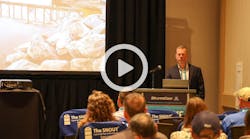
Living shorelines: They’re not new, but the idea is gaining ground, so to speak, in the ongoing quest for ways to protect our coastlines and stop or even reverse coastal erosion.
Despite the name, living shorelines can involve much more than just plants and organic material. They can combine structural elements with vegetation and with other measures such as oyster reefs, which help to protect the land against wave action.
Now the US Army Corps of Engineers is proposing a new nationwide permit dealing specifically with living shorelines. Known as Permit B, it should streamline the permitting process for such projects. Until now, living shorelines have been grouped with other shoreline stabilization methods under Permit 13.
The new permit will not only speed up approval times, proponents say, but also help raise awareness of living shorelines as a viable option for coastal protection. The Corps’ deputy chief for the regulatory division at its Wilmington district office explains here that once the agency receives an application under Permit B, it will have 45 days to respond. If it does not respond within that time, the applicant is granted the permit by default.
Tracy Skrabal, a coastal scientist with the North Carolina Coastal Federation, says in the same article that her organization is monitoring the proposed new permit and making suggestions during the public comment period (which you can do too—see details below).
“We’re very supportive of this nationwide permit and it will, in fact, remove a federal impediment for us to promote, and for people to choose, a living shoreline project over another approach,” she says. “We have been waiting for some process to create an incentive or at least level the playing field for the choice of living shorelines.”
Some of the general conditions a project must meet to qualify for a permit are that that it must be no longer than 500 feet; must use native plants; must not discharge excess dredge or fill material to federal waterways during construction; must not impede movement of water or aquatic organisms; and must be properly maintained.
If you’d like to comment on Permit B, you can do so online here. At that website, you can also find more information on this and the other nationwide permits the Corps is reissuing and modifying. You can comment via email by sending a message to [email protected] and including the docket number, COE–2015– 0017, in the subject line of the message, or by mail to this address: Army Corps of Engineers, Attn: CECW–CO–R, 441 G Street NW, Washington, DC 20314–1000. The deadline for comments is August 1, 2016.
This article from the October 2015 issue of Stormwater magazine looks at green infrastructure techniques in North Carolina and includes an interview with Tracy Skrabal. These articles from Erosion Control—“Not the End of the Line” and “A Life in the Sand”—provide more information on, and examples of, living shorelines.
About the Author
Janice Kaspersen
Janice Kaspersen is the former editor of Erosion Control and Stormwater magazines.

